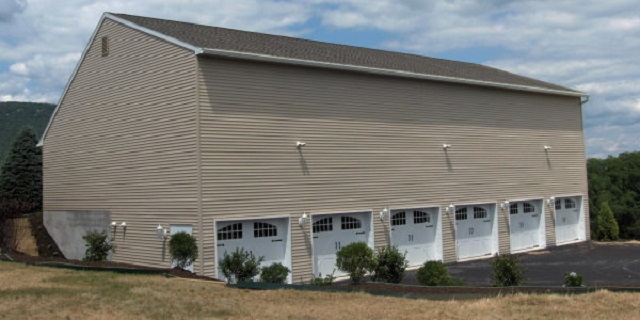Given the ever-increasing price of building construction and materials, it is not surprising that the pole buildings Illinois residents are used to seeing on the farm are finding new uses in urban areas. Once used almost exclusively as barns and equipment sheds, the construction method now is being used for building banks, churches, schools, restaurants, retail shops, and even homes.
 The reason for the increased interest in pole buildings is simple. The building technique itself is considered simple, using less material and enabling rapid, more affordable, construction.
The reason for the increased interest in pole buildings is simple. The building technique itself is considered simple, using less material and enabling rapid, more affordable, construction.
Pole building framing is an adaptation of traditional timber framing construction, which was much more labor-intensive. It uses steel columns or wooden or poles of four to 12 inches in diameter that are buried three feet or more into the ground or a concrete slab foundation, where the load of the building is transferred.
While the pole provides the vertical support for the building, girts attached to the pole provide the horizontal support. The finished structure then can have most any type of facade attached to the exterior, allowing it the versatility to have the right appearance for almost any use.
This type of construction allows pole buildings to be built without interior walls, so they are perfect for use as picnic shelters, equipment shed, or farm animal housing. Storage still is a major function for pole buildings, though modern techniques and insulation have allowed the construction system to branch out into other uses.
In more recent times, post frame construction has turned to the use of pressure-treated timbers that are squared off rather than rounded, as in earlier days. At first, poles for the buildings could be tree trunks or utility poles.
As agriculture became more mechanized, pole barns were a quick way to provide sturdy, spacious buildings for farm equipment as well as supplies and animals. Many of these pole buildings that were constructed in the beginning of the trend in the 1930s still can be found on farms in the region because of their sturdy construction.
The secret of pole building construction is in the girts to which the cross beams and panels are attached for horizontal structural soundness. In essence, the girt will support the panel, while the panel stabilizes the girt. Vertically, the pole or column will support the girt, and the girt will then stabilize the pole. Girts typically are placed two feet apart on the outside of the posts. They can be placed between the posts to provide for thicker insulation or for other interior wall applications.
As people began moving into pole buildings and using them as offices and homes, insulation became a priority. This is where post frame construction can truly be a cost-effective method of construction. Because the posts are set farther apart than in standard building techniques, they allow more space for insulation, making the buildings more energy efficient and cheaper to operate.
The international building code for pole buildings is specific while allowing for regional requirements. These state-specific additions are designed to ensure that the structures will stand up to typical local weather conditions, such as tropical storms in the South and gales and hail in the northern climes.
In some counties, for example, building codes will designate snow load requirements for each town and each level of elevation. Wind speed requirements can be determined by local conditions combined with the type of exposure the building will experience.
Once the decision is made to build a post frame structure, the next step is finding a contractor that is experienced in this type of construction. One way to determine which of those contractors is the most dedicated to the system is by identifying the professional organizations it belongs to, such as the National Frame Building Association.





